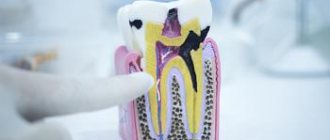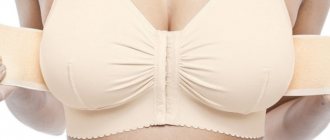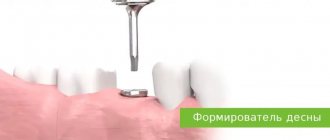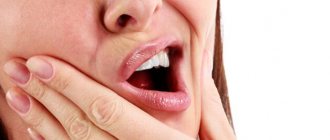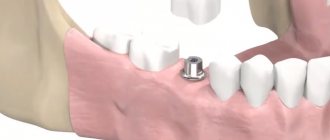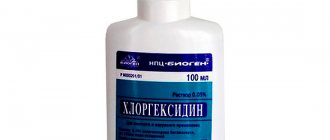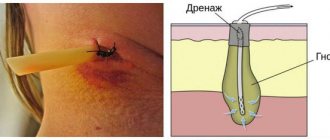December 3, 2021
During surgery, absorbable sutures are increasingly used - so-called threads, which perform a fixing function: they hold damaged tissues and promote their healing. How long such threads take to dissolve depends on several factors - the place where they are applied, the individual characteristics of the body, but the main one is the material used to make the base of the threads.
Content:
- Why is the wound sutured after pulling out the figure eight?
- Classification of seams
- How long do you need to walk with non-absorbable sutures?
- How long does it take for self-absorbable sutures to dissolve?
- What complications can you encounter after suturing?
- Recommendations for patients
A dental surgeon applies sutures after removing a wisdom tooth if the intervention was very complex and serious injury to the gums occurred.
Often, specialists insist on suturing a wound, even if it is small, in order to minimize the likelihood of infection. Let's consider what material doctors use when suturing after tooth extraction, whether it needs to be removed in the future, and how to properly care for the injured area.
HOW LONG DOES THE THREAD DISSORB AFTER THE OPERATION?
To understand how many days it takes for the threads to dissolve, you must first ask your surgeon what material was used for suturing. The doctor will not only clarify the information you are interested in, but will also advise how long it will take for the stitches to completely dissolve. Only a specialist can competently assess this process, taking into account the individual characteristics of the patient.
But in general, you need to know how long it takes for the threads to dissolve by looking at the type of threads used during the operation:
- Catgut begins to lose its fixing properties after a month, while the threads finally dissolve only at the end of the 4th month of wound healing;
- Lavsan is often used in cosmetology, since the material begins to deteriorate already on the 10-12th day, but this process can take up to 1.5 months;
- Vicryl has an average degree of resorption: the threads lose their strength after 2-3 months.
In this case, it is worth making allowances for proper care of the postoperative wound according to the scheme recommended by the supervising surgeon. If it is not handled correctly and the rules of personal hygiene are neglected, healing may be delayed and the process of suture resorption may worsen.
Why is the wound sutured after pulling out the figure eight?
Wisdom teeth are very insidious and often lead to serious problems. Pulling it out most often resembles an operation. Since the roots of the unit go deep into the gum and can be ornate, tortuous, soft tissue is often excised to extract them. After all solid debris has been removed from the depths of the tissue, the wound is sutured. This is done in order to:
- prevent bleeding;
- protect the blood clot formed in the wound from injury;
- protect the operated area from the accumulation of food debris;
- minimize the risk of damage to the operating area;
- speed up regeneration processes.
It is believed that applying sutures after wisdom tooth removal reduces the likelihood of infection by approximately 90%. This is explained by the fact that pathogens cannot penetrate into the deep layers of the wound.
WHEN DISSORBABLE THREAS ARE USED
This type of medical materials is used when suturing surgical wounds: such manipulations are carried out both on the surface of the skin, during cosmetic operations, and in deep layers of tissue, for example, during transplantation of internal organs.
The main function of such sutures is to maintain internal tissues in a stable condition until they grow together and begin to function without outside support.
It is advisable to use absorbable sutures in cases where the patient does not have the opportunity to return to the surgeon to remove the applied staples, clamps or sutures made of durable materials.
The most common use of absorbable sutures in gynecology is for suturing the perineum, tears in the vagina or cervix during natural childbirth. Studies have shown that during the postpartum period, the threads removed themselves within 2-4 months.
Classification of seams
After tearing out the “eight”, at the discretion of the dental surgeon, regular and self-absorbing sutures can be applied.
In the first case, we are talking about materials that cannot dissolve on their own. These are silk, nylon, polyester. Such threads are not absorbed. They securely hold the edges of the wound until the doctor removes them. Self-absorbable material is absorbable. Its main advantage is that the patient does not have to visit the doctor again to have his stitches removed. The latter disappear without a trace on their own.
There are two types of self-absorbable threads:
- Absorbable due to hydrolysis reaction. These include Dexon and Vicryl threads. They are synthetic and do not cause allergic reactions. The edges of the wound are securely held for about one month.
- Absorbable due to the influence of enzymes. We are talking about Catgut. Its particles are quickly eliminated from the human body. Catgut is used for complex dental operations. But it is important to consider that it contains foreign proteins that can cause inflammation.
There is no need to think that suture materials dissolve without a trace. They simply break down into tiny particles that a person spits out or swallows. These particles are non-toxic and therefore cannot cause poisoning.
How long do you need to walk with non-absorbable sutures?
If the doctor used non-absorbable suture material after removing a wisdom tooth, then seven to ten days later the patient must return for an appointment. The doctor will evaluate how the wound is healing and determine whether the suture material can be removed.
There is no need to be afraid of this procedure. It causes only minor discomfort. The dentist cuts the stitches one by one and, grasping one end of the thread with tweezers, carefully pulls it out. If the patient is afraid of pain, the doctor may use topical anesthesia.
How long does it take for self-absorbable sutures to dissolve?
Typically, the suture material disintegrates after three weeks. The patient may notice how it has fallen out, or simply find that the wound remains clean, without threads. In more detail, catgut dissolves from ten to fourteen days, Vicryl - within thirty days, Dexon - a little longer.
It is impossible to name the exact period of resorption. Here everything depends not only on the characteristics of the material used, but also on the individual characteristics of the patient’s body. It also happens that the threads are still in place, but the doctor no longer sees the need for them. Then he removes them in the same way as non-absorbable ones.
WHAT ARE DISSOBRABLE SUTURES
This is the name given to retaining threads that lose their fixing properties within up to 4 months. In surgical practice, the following types of self-absorbing sutures are most often used:
- Catgut is an organic type of thread made from cow intestines. At the same time, it is the longest absorbable - catgut “lasts” up to 4 months;
- Lavsan is a synthetic thread created on the basis of polyesters. They are used when long-term fixation is not required, since the material quickly loses its holding power;
- Vicryl is another representative of synthetic sutures that are actively used in medicine, including cosmetics.
Besides those mentioned, there are many other types of materials used. Their choice depends on the type of intervention performed and the mobility of tissue in the area of the operation, so only a doctor can individually select threads that will not subsequently leave scars, but will resolve in a short time.
The main factors contributing to the independent destruction of such threads in human tissues are:
- Chemical reactions of the body based on the interaction of proteins;
- Chemical reactions of the material with water contained in the human body.
They provoke the dissolution of postoperative threads, which are used to tighten surgical tissue incisions for a short time.
What complications can you encounter after suturing?
- As a rule, the regeneration process proceeds without complications. But it happens that the patient encounters symptoms that bother him. Let's name the most common complications after wisdom tooth removal:
- Bleeding. In the first three days after surgery, periodic bleeding is considered normal, but if bleeding persists longer, you should immediately consult a dental surgeon.
- Three days after removal, the gums look very swollen and very painful. You need to make sure that all roots have been removed. To do this, pictures of the inflamed area are taken.
- Increased temperature several days after surgery. If the hole bleeds, is swollen and hurts, and the body temperature is elevated, we can talk about inflammation of the surgical area. To remove it, you need to carry out antibiotic therapy.
If you have the slightest doubt regarding the healing process, you should immediately see a qualified dentist. Very often, delay makes the situation worse. It is better to get a consultation once again than to treat an advanced complication for a long time.
HOW TO CARE FOR DISSORBABLE SUTURES
Having dealt with the question of how long it takes for the threads to dissolve, it is important to understand how to properly care for the suture after surgery so that healing proceeds safely, the threads are safely torn away, as quickly as possible, and there are no scars left at the site of the intervention.
Please pay attention to the following most important rules for caring for postoperative sutures:
- The most important point is the sterility of all manipulations performed. Before treating a wound, be sure to wash your hands and thoroughly disinfect all instruments.
- Depending on the nature of the sutured wound, it must be treated with an antiseptic - brilliant green, Fukortsin, potassium permanganate solution, hydrogen peroxide, medical alcohol. It is better to check with the supervising surgeon what exactly to use. You may have to combine medications and use them together with anti-inflammatory ointments.
- During water procedures, avoid friction; the wound can only be washed with warm water or a decoction of herbs.
- If we talk about postpartum sutures, then it is imperative to maintain intimate hygiene - this will prevent complications.
So, in order to find out how long it will take for the sutures to be successfully absorbed after surgery, you must first find out the material from which they are made. It is also worth taking into account the individual characteristics of the body: if you have a tendency to long-healing wounds, then be prepared for the fact that complete resorption of postoperative threads can take up to six months, especially if organic materials were used during suturing of the wound.
Recommendations for patients
To ensure that the recovery process takes little time and goes without complications, it is recommended:
- Follow all doctor's orders.
- Do not eat anything for the first few hours after surgery. In the first two to three days after therapy, chew food with the healthy side of the jaw and give preference to soft foods.
- Do not touch the unhealed hole with your hands.
- Do not try to remove a blood clot with your tongue or foreign objects.
- Rinse only if prescribed by a doctor.
- Avoid strenuous physical activity for the first two weeks.
- Do not attempt to remove stitches yourself.
By following these simple rules, a person can quickly return to their normal lifestyle after dental surgery.
